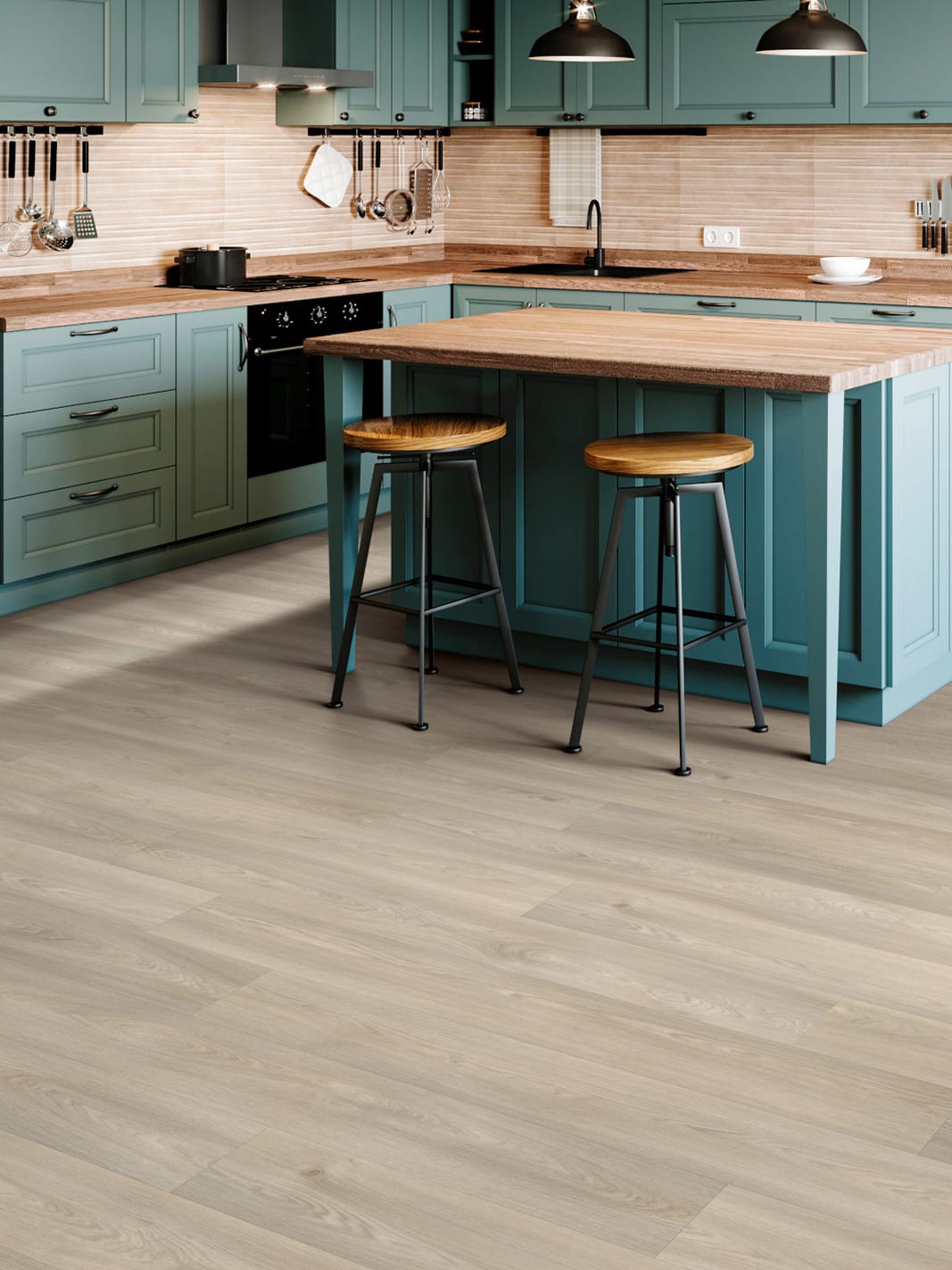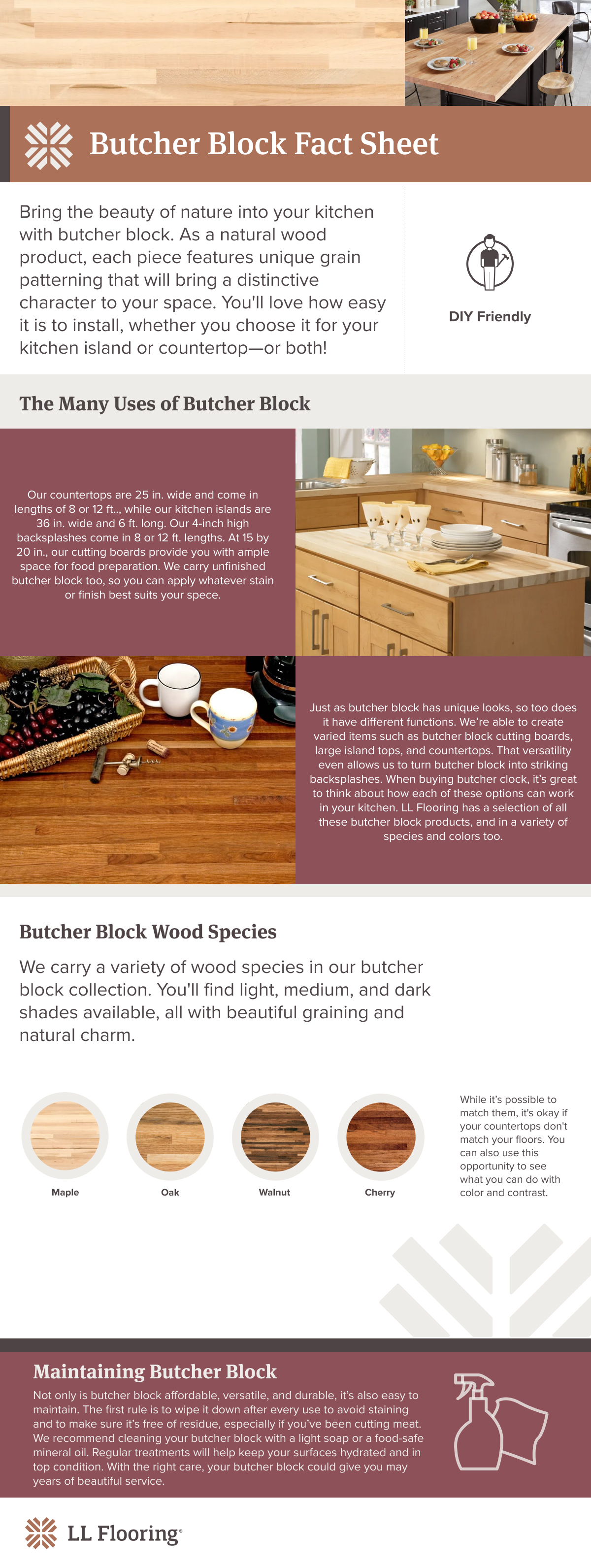- Home
- Education
- Buying Guides
- Buying Guide: Shop for Butcher Block Island Tops
Buying Guide: Shop for Butcher Block Island Tops
A Guide to Choosing the Best Island Tops for your Kitchen
Create a Focal Point in Your Kitchen with an Island Countertop
Having a kitchen island can make your space more efficient and add extra storage space. It provides casual seating for hosting guests and allows for extra appliances by providing multiple outlets. They can also serve as an additional cooking space. The island top, in particular, serves as a focal point and brings the room together, making a huge difference in your kitchen.
Given that there are various materials, colors, and finishes, choosing tops for your kitchen island can be a challenging task. This buying guide will explore what to consider when buying new kitchen island tops and the different types of materials to choose from.
Butcher Block Island Tops
Butcher block is a sustainable, wooden island top material. It can be fashioned in different styles and comes in a variety of colors. The material is made of straight cuts of wood that are glued together. However, depending on the width and thickness, it can also be one complete, solid slab. Typically, butcher block island tops are at least 1.1 inches thick, 36 inches wide, and six feet long. They come in a range of dark to light colors and in the following wood species:
Acacia
American Cherry
American Walnut
Ash
Maple
Teak
White Oak

Butcher Block Island and Countertop
There are many benefits to choosing butcher block island tops. The material is versatile, has great longevity, and is easy to refinish.
These factors make it stand out among other island top materials:
Versatility
Butcher block material is versatile. It comes in a variety of wood types outside of the traditional cherry, oak, and maple, which allows you to coordinate different textures and colors. You can even find butcher block material with varying edge grain, end grain, or mixed styles. Butcher block looks amazing alongside cottage or farmhouse themes, and it pairs well with metal finishes for a modern, industrial appeal.
Longevity
As far as is longevity is concerned, butcher block wins the race. Much like hardwood floors, these island tops can last for decades if maintained properly.
Easy to Refinish
Although butcher block material is susceptible to stains and scratches, it's a breeze to fix. Simply sand down the surface to remove any blemishes and re-oil the wood. It's very important to use a food-safe oil to ensure no toxic chemicals contaminate any food prepared on the island.
Other Types of Island Tops:
Laminate
Laminate is a popular material, and for good reason. It's inexpensive, easy to maintain, and comes in a wide variety of colors. Laminate is also used to create or bolster a particular aesthetic. For instance, laminate looks great in urban, modern, or Scandinavian-themed homes. Coordinating a laminate island top with laminate countertops creates a clean, uniform look. Alternatively, adding a pop of color can make the laminate island the focal point of your kitchen. Installation of these island tops is DIY-friendly, but the surface can be slightly difficult to repair. Also, laminate isn't heat-resistant.
Granite
Granite has a range of finishes from which to choose and is made of natural rock, mixed with quartz and feldspar. This is what creates its spotted aesthetic. It's very hard-wearing and less likely to scratch compared to softer stones. Since the rock material is porous, a granite island top is slightly susceptible to stains if not sealed properly. Its distinct appeal is particularly eye-catching in an urban, modern, or bohemian-styled home.
Installation Considerations
Installing an island top can make for a fun DIY project. However, if you're unsure about doing it yourself, contact an LL Flooring licensed contractor. Prior to installation, it's important to understand the size of your island and how it affects the weight of the island top. If you don't have a strong, sturdy base, you'll want to opt for a lighter material for your island top. Here are a few tips if you're installing your island top yourself: Acclimate your boards first. To do this, place your island top in the room where you will install it and let it rest for 72 hours. Be sure to avoid placing it directly on the floor, as this can cause warping. When it comes to butcher block, we recommend adding pilot holes to secure the island top in place. Avoid using glue, as it can result in wood cracking over time.
Enjoying Your Island Top
An island top in your kitchen can create cohesiveness and be a stylish addition. There are a range of materials to choose from, including butcher block, laminate, and granite, with each offering different benefits and aesthetics. What's more, installation is relatively straightforward, and if you maintain the island top properly, it can last for decades to come.
